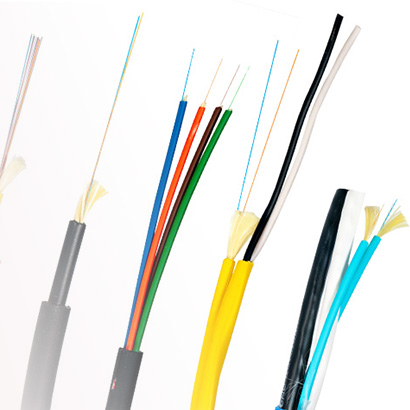Fiber Optic Cable The telecommunications world is rapidly moving from copper wire networks to fiber optics. Optical fiber is a very thin wire of pure glass that acts as a waveguide for light over long distances. It uses a principle known as total internal reflection. Fiber optic cable actually consists of two layers of glass: the core, which carries the actual light signal, and the sheath, which is a layer of glass surrounding the core. The coating has a lower refractive index than the core. This causes Total Internal Reflection in the kernel. Most fibers work in duplex pairs: one fiber is used to transmit and the other to receive. However, it is possible to send both signals over a single lane. There are two main types of fiber optic cables: Single Mode Fiber (SMF) and Multimode Fiber (MMF). The difference is basically in kernel size. MMF has a much larger core and allows multiple modes (or "rays") of light to be emitted. SMF has a very narrow core that only allows a single mode of light to propagate. Each type of fiber has different properties with its own advantages and disadvantages.
Why use optical fiber cable?
They have almost unlimited information
They have high throughput (very wide bandwidth, THz or Tbits/s)
They have very low transmission losses (<0.2dB/km, cf1dB/km microwave, 10db/km twisted copper pair)
They do not dissipate heat
Immune to cross talk and electromagnetic interference
Fiber optic cable Fiber optic cables have many uses in a variety of situations in industries and applications. Check out some of these uses:
Medical
Optical fibers are suitable for medical use. They can be made into extremely thin flexible wires for insertion into the lungs, blood vessels and many hollow parts of the body. These optical fibers are used in various instruments that allow doctors to observe the internal parts of the body without performing any surgery.
Telecommunication
Optical Fiber is installed and used for the purpose of receiving and transmitting. Telephone transmission uses fiber optic cables. These fibers transmit energy in the form of light pulses. Its technology is comparable to coaxial cables, except that optical fibers can handle thousands of conversations simultaneously.
Networking
Optical fibers are used to connect servers and users in various network settings and also help improve the accuracy and speed of data transfer.
Industrial / Commercial
Fiber is used in access areas such as sensory devices to make temperature, wiring where EMI is an issue, pressure as wiring in industrial environments and automobiles. Broadcast/CATV Cable companies use fiber optic cables to cable HDTV, CATV, video-on-demand, internet and many other applications.
Defense / State
They are used as hydrophones for seismic uses such as SONAR and wiring in submarines, airplanes and other vehicles.
Data storage
Fiber cables are used for data storage and transmission. Fiber optic cables are also used as sensors for imaging and illumination and to monitor and measure numerous variables. Also, fiber cables are used in development, research and testing in all the applications mentioned above.
